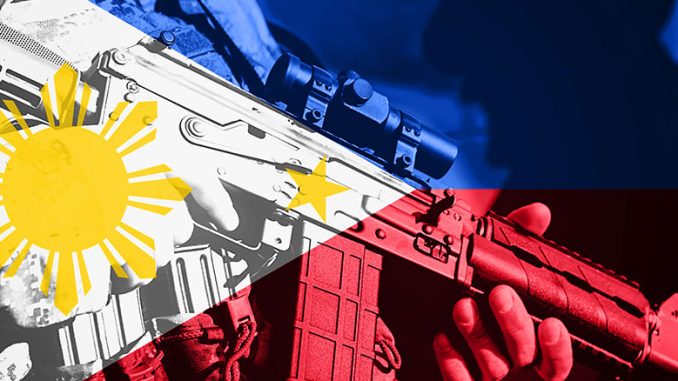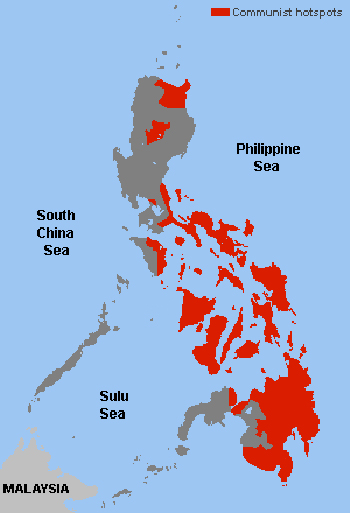
Contemporary counterinsurgencies obscure state violence behind technocratic jargon. The term ‘force multiplier’ connotes the recruitment and use of militias as a means of thickening a thinly stretched military’s presence across insurgent zones. In reality, such organizations are ill-disciplined purveyors of government-sanctioned brutality. Militias have been particularly prevalent in the Philippines since the 1970s. Muslim separatist and leftist insurgencies triggered extensive counter-militarization campaigns by the Armed Forces of the Philippines (AFP) aimed at inducting subaltern elements into the state’s coercive machinery and draining away support for dissident movements. A vast corpus of human rights literature has documented militia atrocities encouraged by political elites and a pervasive sense of impunity. Much less has been said about the militiamen themselves. Their motives for committing acts of violence often go beyond individual psychological factors. Nor are militias solely composed of hardened criminals and other anti-social elements. Personal rivalries, clientage, and a culture of militarism make militia violence far more likely during counterinsurgencies. The Philippine state, generally regarded as ‘weak’, managed to develop relatively effective counterinsurgent capacities by the late twentieth century. The AFP can concentrate enough force to intimidate potentially disloyal communities into basic compliance and cooperation. In addition, local commanders provide disgruntled civilians, dissatisfied rebels, and warlord retainers with the means to settle personal scores. The military also works in tandem with provincial strongmen and their private armies to pursue mutually beneficial predatory activities. Such activities and state-society ambiguities are best illustrated by surveying counterinsurgency operations in Negros Occidental, Davao City, and Maguindanao since martial law.
During Negros’ settlement (c.1850-1899) and American colonial pacification (1899-1906), the fault line separating elites from subalterns was fairly deep. Charismatic millenarian leaders mobilized followings inspired by pre-Hispanic religious beliefs to resist sugar planter power. On haciendas, a planter’s armed retainers and overseers were more or less his personal clients, hired muscle deployed against recalcitrant workers with whom they had little in common, even if some of them emerged from a subaltern social milieu. Fragmented and closely policed, plantation laborers could do little against estate owners. It was not until the Communist Party of the Philippines-New People’s Army (CPP-NPA) insurgency expanded exponentially after 1980 that the balance began to shift. Rebel bands outstripped planters’ coercive power, forcing many landholders to cut deals with and provide payoffs to insurgents. A more effective counterinsurgency strategy was put in place by the Aquino government after the 1986 People Power revolution. People Power generated government measures to popularize and democratize anti-communism. Propaganda campaigns conducted by AFP special operations forces emulated NPA indoctrination techniques by organizing anti-leftist seminars. The pro-planter Aquino administration received monetary contributions from sugar estate owners to fund militia groups. More regimented paramilitary forces patrolled hacienda boundaries to keep out NPA cadres while pro-government villagers joined Citizen Armed Force Geographical Units (CAFGU). 1 Some workers were driven to join by intimidation, but others effected by NPA exactions and assassinations sided with the state to redress personal grievances.

Events further south in Davao City followed a similar, if more virulent, dynamic. By the mid-1980s, Davao City had become a major epicenter of the communist insurgency, witnessing extensive urban warfare between the AFP and NPA. Special NPA assassination squads called sparrow units gunned down unpopular government officials and security personnel at will. AFP units responded by conducting random sweeps in which purported leftists were abducted and later killed. Numerous non-combatants were caught in the crossfire. NPA cadres and commandos targeted civilians for extortion and execution when they displayed insufficient revolutionary zeal. By 1986, Davao City was awash with arms and highly trained triggermen. Alsa Masa (Masses Arise) was formed within this context. 2 While the details of its origins are contested, Alsa Masa was formed in reaction to NPA violence. Barrio residents who had been brutalized by or lost loved ones to NPA hitmen took up arms and received support from Philippine military officials. According to one estimate 3,000 former NPA members joined Alsa Masa under compulsion or after finding themselves on the wrong side of leftist factional struggles. 3 Anti-communist indoctrination sessions playing a role in driving recruitment forward, but many joined to avenge personal grievances. Alsa Masa also provided idle and angry youths with a sense of identity and purpose, no mean feat at a time of great political turmoil and near economic collapse. Their brash macho swagger and brutal violence signified subaltern empowerment via counterrevolution.
Muslim militias made up of former Moro National Liberation Front (MNLF) rebels joined the AFP in combat operations throughout Davao City. Ferdinand Marcos had been coopting insurgent bands within Muslim areas since the 1970s. These units were hurled against more recalcitrant Muslim groups and selectively deployed throughout eastern Mindanao to hunt down NPA formations. The nature of MNLF military mobilization, relying on the armed retainers of individual clan chiefs, made it easier to pick the rebel movement apart. In later decades, Philippine presidents have formed alliances with provincial warlords possessing vast private armies. Like the Americans a century before, President Gloria Macapagal Arroyo cultivated Muslim strongmen with modest genealogical origins because she felt they would be more loyal to her. The Ampatuan clan of Maguindanao came from humble roots, initially serving as bodyguards for the blue-blooded Sinsuats. Lacking aristocratic prestige, Andal Ampatuan, Sr. required presidential patronage to retain and expand his following. Arroyo provided largess in exchange for electoral support. 4 Given the perennial state of armed conflict in the Muslim Philippines, subaltern groups have eagerly joined warlord armies for protection and to prosecute personal feuds. Andal Ampatuan’s retainers flooded Maguindanao’s CAFGU formations to obtain high-powered weaponry and provide added muscle to local military commanders engaged in illicit economic activities. Militia service reinforced preexisting predatory inclinations as community resources could be plundered and local rivals eliminated with de facto government sanction. Retainer/militia violence continually magnified until it went too far with the 2009 Maguindanao massacre. While Ampatuan power has been drawn down they, and other Philippine strongmen, still possess formidable means of private violence.
Boundaries between the Philippine state’s coercive institutions and subaltern actors have become increasingly porous since martial law. The state has, in effect, become a source of subaltern militarization. The government’s ability to create its own subaltern counterinsurgents was a crucial factor in containing insurgencies and directing popular grievances in a counterrevolutionary direction. Militias are neither spontaneous manifestations of loyalist zeal nor mere hirelings of the powerful. Rather, they are organizations where public and private violence intertwine.
Mesrob Vartavarian
Mesrob Vartavarian is a U.S.-based researcher. He studied history at UCLA (BA/MA) and Cambridge (PhD). His publications have appeared in Modern Asian Studies, the IIAS Newsletter, and South East Asia Research. He is currently working on a study of oligarchy building and political change in Island Southeast Asia.
Kyoto Review of Southeast Asia, Trendsetters, July 2019
Notes:
- Rutten, Rosanne 2008. Regional Dynamics: Rise and Decline of the CPP-NPA in Negros Occidental. In Brokering a Revolution: Cadres in a Philippine Insurgency, ed. Rosanne Rutten, 307-309. Quezon City: Ateneo de Manila University Press. ↩
- Jones, Gregg R. 1989. Red Revolution: Inside the Philippine Guerilla Movement. London: Westview Press, 268-274. ↩
- Bueza, Michael 2016. Fast Facts: What’s the Alsa Masa? Rappler, September 6, 201 ↩
- Human Right Watch 2010. “They Own the People”: The Ampatuans, State-Backed Militias, and Killings in the Southern Philippines. New York: Human Rights Watch. ↩
